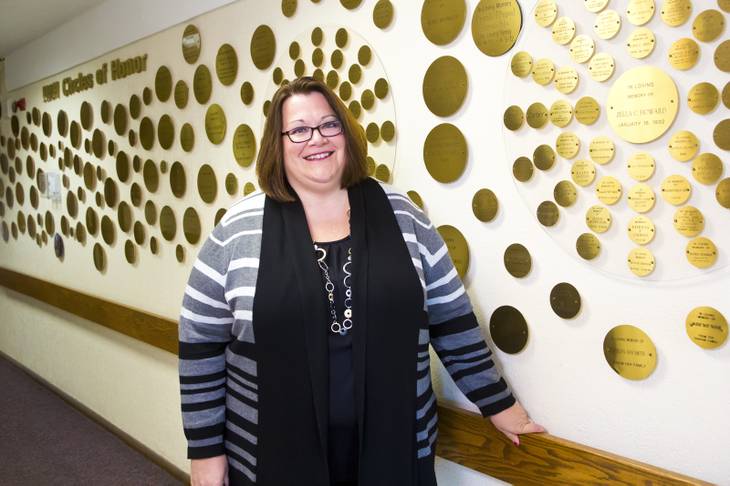HOW TO FIND A HOSPICE
Caring Connections, a program of the National Hospice and Palliative Care Organization, suggests asking these questions when searching for hospice care:
• What services are provided?
• What kind of support is available to the family/caregiver?
• What roles do the attending physician and hospice play?
• What do hospice volunteers do?
• How does hospice work to keep the patient comfortable?
• How are services provided after hours?
• How and where does hospice provide short-term inpatient care?
• With which nursing homes or long-term care facilities does the hospice work?
• How long does it typically take the hospice to enroll someone once the request for services is made?
MEDICARE AND HOSPICE
Medicare defines a set of hospice core services, which means that hospices are required to provide these services to each person they serve, regardless of the person’s insurance. Medicare covers these hospice services and pays nearly all of their costs:
• Doctor services
• Nursing care
• Medical equipment (such as wheelchairs or walkers)
• Medical supplies (such as bandages and catheters)
• Drugs for symptom control and pain relief
• Short-term care in the hospital, including respite and inpatient for pain and symptom management
• Home health aide and homemaker services
• Physical and occupational therapy
• Speech therapy
• Social work services
• Dietary counseling
• Grief support to help you and your family
• Medicare hospice benefits do not cover the cost of care home or nursing home room and board.
VEGAS INC coverage
For years, private hospice providers in the Las Vegas Valley have built a profitable business model around easing terminally ill patients toward a comfortable death.
The drill seemed simple enough, with noble intent: Set up an office; brand a soothing name; hire or contract doctors, nurses, social workers and religious counselors to visit patients at their homes or care facilities; and get reimbursed by Medicare. The profit would rise or fall depending on the needs of the patients: Those who demanded less attention would offset the cost of serving those who needed a higher level of care.
But because of the demands of additional federal quality-control reporting requirements and shrinking Medicare reimbursements for patient care and pharmaceuticals, companies that take care of the dying are learning the business isn’t as simple or as financially rewarding as it once was.
“It’s harder to run a successful hospice today than it was five years ago, or even one year ago,” said Candis Armour, executive director of Las Vegas Solari Hospice Care. “The cost of health care is going up and some providers are faced with the challenge of having to provide more care with fewer resources.”
Nonetheless, because Las Vegas isn’t lacking for an elderly population approaching death, investors on the hunt for profitable businesses still are attracted to the hospice industry. By some estimates, between 40 and 50 hospice providers — most of them for-profit organizations — operate in Southern Nevada.
Karen Rubel, vice president of development for the region’s most prominent nonprofit hospice, the Nathan Adelson Hospice, said more for-profit hospice companies are establishing themselves in Las Vegas each month.
“This does not mean that there is a need for more hospices, or that the demand has increased,” she said. “This simply means that more individuals are looking for ways to increase their current business profit margin and feel that hospice is a good business venture.”
But the business is getting more complicated. Providers are having to grow their back-office operations to comply with new government regulations and accounting demands, all while profits are dipping. Hospice providers normally operate on a 4 percent profit margin but because of the fallout of funding cuts wrought by Washington’s sequestration, that margin is now about half that, said Jon Redulovic, vice president for communications at the National Hospice and Palliative Care Organization.
Amanda Holbein, clinical director of Hospice Del Sol, noted that not all providers claim the same credentialing, member affiliations or accreditation — which, she said, “works to the detriment of patients in the community. The choice (of a hospice) becomes overwhelming and/or confusing. It is already an overwhelming experience to face losing a loved one.”
At minimum, a hospice should be certified by Medicare, which pays the lion’s share of a patient’s bills.
Nationwide, as many as 1.6 million patients are receiving hospice care, according to industry estimates, while the number of hospice organizations grew from 5,150 in 2010 to 5,560 in 2012, becoming a $17 billion, mostly for-profit industry. Of that patient tab, an estimated $15 billion is reimbursed to the hospice organizations by Medicare.
Medicare has created specific criteria for hospice eligibility, requiring the patient’s primary care physician to make an assessment, based on disease-specific factors, that the patient likely will die within six months. A person may have terminal cancer or incurable Parkinson’s disease, for instance, and not yet qualify for hospice services.
One of the industry’s ongoing tasks is to get people to understand what hospice is and what it’s not. Fundamental to hospice is the patient’s decision to forgo further medical efforts, including aggressive treatments, to prolong life in exchange for medical and emotional care — ranging from pain-reducing morphine to the comforting hand of a prayerful minister — to promote a peaceful death. Some programs include various sorts of therapy — physical, music and art, for instance.
“Most people believe hospice is a place where you go to die,” said Maurice Gregory, chief of operations and compliance for Comfort Hospice Care. “This is not true anymore. Today, hospice is a way in which one can live one’s life free of pain and with the ability to maintain one’s dignity in the remaining days, usually surrounded by loved ones. It relies on palliative rather than curative care. This might be the reason why people are not ‘dying in six months or less,’ which was the standard set for determining hospice eligibility. Adding some quality to their life has given them the ability to sustain longer.”
Indeed, some patients might begin hospice care and then withdraw from it because their condition has stabilized; others might have their hospice care renewed if, after six months, they are still seen as likely to die within the next six-month period.
The bureaucracy
Hospice providers in Nevada are regulated by the Bureau of Healthcare, Quality and Compliance, and the Centers for Medicare and Medicaid Services (CMS). They are licensed by the state, and CMS certifies the programs offered by hospice facilities.
Nevada’s Division of Health Care Financing and Policy works with CMS to assist in providing care to eligible individuals and families with low incomes and limited resources. Both Medicare and Medicaid offer hospice benefits, as do many private insurance companies.
Hospice can be a lucrative business, Rubel said, “if you only take on patients with insurance and simply provide the basics of what is required from Medicare.
Hospice has been affected by sequestration and other governmental cost-savings strategies. Reimbursement has decreased by 2 percent each year and will continue to decline over the next 10 years. Significantly more restrictive interpretations of regulations governing reimbursement for hospice services are creating urgent need for hospices to reorganize and restructure their operations, and additional patient monitoring and reporting demands by Medicare — with financial fines for shortcomings — are adding to the challenges of running a hospice.
Holbein, whose family-owned Hospice Del Sol serves about 35 patients, shrugs it off.
“It’s going to be a little sticky, but in the whole grand scheme of things, it’ll be great to have quality and performance measurements to compare hospices,” she said. “I think it’s a good idea. But when you start something new, people can get a little crazy sometimes.”
Rubel also looks at the bright side, saying she and her colleagues are “embracing these changes and looking forward to the positive benefits of the (Affordable Care Act). But we are aware there will be a few growing pains along the way.”
Hospice has always been a low-cost option for patients and the government.
“However, under the Affordable Care Act, hospices are going to have to learn how to do more with less,” Armour said. “Hospices are being hit particularly hard in the area of financial responsibility for pharmaceuticals under the Medicare Part D prescription drug benefit. Less financially viable hospices may have to turn patients away because there simply won’t be enough reimbursement funds to cover these costs.”

